The Future of Naval Warfare: The Zumwalt-class Destroyer
The Zumwalt-class destroyer is not just another ship in the fleet; it represents a bold leap into the future of naval warfare. Imagine a vessel that combines cutting-edge technology with an innovative design, all while maintaining a stealth profile that makes it nearly invisible to enemy radar. This is what the Zumwalt-class brings to the table. With the global landscape of conflict constantly shifting, the need for advanced naval capabilities has never been more crucial. The Zumwalt-class is here to redefine what it means to be a modern warship, merging stealth, firepower, and versatility into a single, formidable platform.
At first glance, the Zumwalt-class destroyer might look like something out of a science fiction movie. Its unique hull design, characterized by a sleek, angular shape, is not just for aesthetics; it serves a distinct purpose. This design minimizes the ship's radar cross-section, drastically reducing the chances of detection by enemy forces. In a world where information is power, being able to operate undetected is a game-changer. But it’s not just about hiding; it’s about striking with precision and efficiency. The Zumwalt-class is equipped with advanced weaponry that allows it to engage threats from a distance, ensuring that it can project power without putting itself in harm's way.
Moreover, the Zumwalt-class destroyer incorporates an array of technological innovations that set it apart from traditional naval vessels. From its electric propulsion system to its sophisticated sensor suite, this destroyer is designed for the modern battlefield. Imagine having the ability to gather real-time data and maintain situational awareness while remaining under the radar. This capability not only enhances the Zumwalt's combat effectiveness but also allows it to operate in a variety of roles, from engaging enemy ships to providing humanitarian assistance in crisis situations.
The strategic implications of the Zumwalt-class are profound. As naval warfare evolves, this destroyer will serve as a cornerstone of future naval doctrine. Its ability to operate in joint missions with allied forces enhances interoperability, allowing for seamless integration during collaborative operations. This is crucial in a world where threats are increasingly complex and multifaceted. The Zumwalt-class is not just a ship; it is a symbol of the future of naval warfare, prompting shifts in strategy and tactics that will shape the way we think about maritime conflict.
In conclusion, the Zumwalt-class destroyer is a testament to human ingenuity and the relentless pursuit of advancement in military technology. As we look to the future, this vessel stands ready to meet the challenges of modern warfare head-on, ensuring that naval forces remain a formidable presence on the world's oceans. The Zumwalt-class is not just about today; it's about preparing for the uncertainties of tomorrow, making it a pivotal player in the ongoing evolution of naval warfare.
- What is the Zumwalt-class destroyer?
The Zumwalt-class destroyer is a class of stealthy, technologically advanced naval warships designed for multi-mission capabilities, including surface warfare, anti-aircraft operations, and humanitarian assistance.
- What are the key features of the Zumwalt-class destroyer?
Key features include a unique hull design for stealth, advanced weaponry for long-range strikes, and sophisticated sensors for real-time situational awareness.
- How does the Zumwalt-class enhance naval strategy?
Its ability to operate undetected while providing powerful fire support allows for greater strategic flexibility and interoperability with allied forces in joint operations.
- What role does the Zumwalt-class play in future naval warfare?
It is expected to influence future naval doctrine by prompting shifts in strategy and the development of new technologies to address emerging threats.
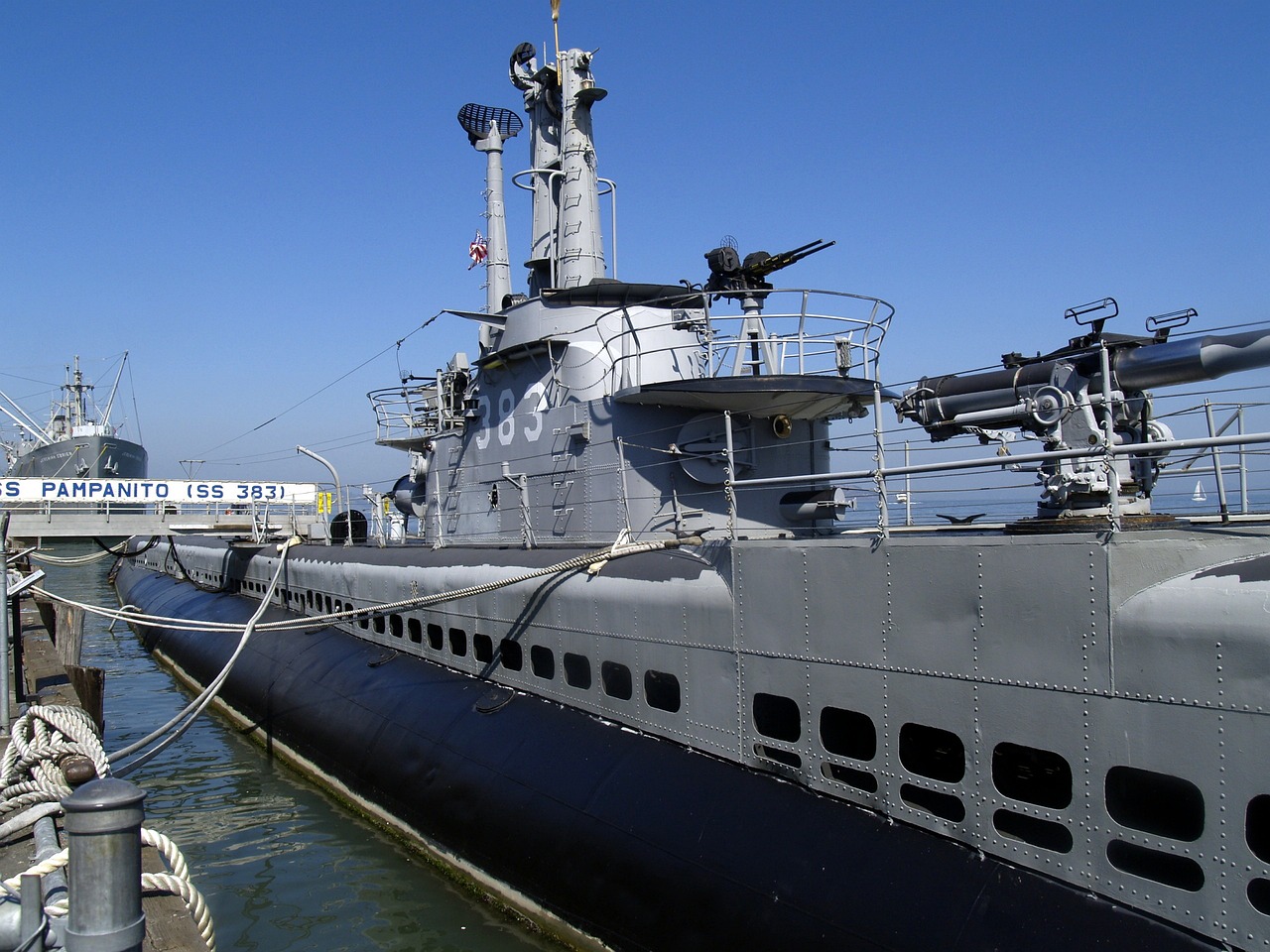
Overview of the Zumwalt-class Destroyer
The Zumwalt-class destroyer stands as a beacon of innovation in the realm of naval warfare. Designed to meet the challenges of modern combat, this class of destroyers showcases a remarkable fusion of stealth technology, advanced weaponry, and a revolutionary hull design. Imagine a ship that not only dominates the seas but does so with an air of invisibility, making it a ghost to enemy radars. The Zumwalt-class is precisely that—a game changer in maritime operations.
At its core, the Zumwalt-class is engineered for versatility. Whether it’s engaging in high-intensity conflict or providing humanitarian assistance, this destroyer adapts to a myriad of missions. Its design reflects a profound understanding of the evolving nature of warfare, where traditional tactics are increasingly being replaced by strategies that emphasize speed, stealth, and precision. The Zumwalt-class destroyer is not just a vessel; it is a multi-mission platform capable of executing a wide range of operations, making it invaluable to the U.S. Navy and its allies.
One of the most striking features of the Zumwalt-class destroyer is its unique hull design. The ship's silhouette is not just for aesthetics; it plays a crucial role in its stealth capabilities. With a hull that minimizes radar cross-section, the Zumwalt can navigate hostile waters with a reduced chance of detection. This design philosophy extends beyond mere stealth; it enhances the ship's overall performance, allowing for improved maneuverability and stability in various maritime conditions.
Moreover, the Zumwalt-class is equipped with an array of cutting-edge technologies that redefine naval warfare. The integration of advanced radar systems, automated weaponry, and an electric propulsion system signifies a monumental shift in how naval operations are conducted. These innovations not only enhance the destroyer's operational effectiveness but also set a new standard for future naval vessels. In short, the Zumwalt-class destroyer is not just a ship; it is a technological marvel that embodies the future of naval warfare.
To summarize, the Zumwalt-class destroyer represents a significant leap in naval technology, characterized by:
- Stealth capabilities that reduce its visibility to enemy radar.
- Advanced weaponry for superior combat effectiveness.
- A multi-mission platform adaptable to various operational scenarios.
- A unique hull design that enhances performance and survivability.
As we delve deeper into the technological innovations and strategic implications of the Zumwalt-class destroyer, it becomes clear that this ship is not just a part of the U.S. Navy's fleet; it is a pivotal element in shaping the future of naval warfare.

Technological Innovations
The Zumwalt-class destroyer is not just a ship; it’s a game changer in naval warfare, embodying a fusion of cutting-edge technology and innovative design. Equipped with an arsenal of advanced systems, this destroyer redefines what modern naval vessels can do. Imagine a ship that can operate stealthily, strike with precision, and gather intelligence in real-time—all while maintaining a low profile. This is the Zumwalt-class, a beacon of the future of maritime defense.
One of the most striking features of the Zumwalt-class is its electric propulsion system. Unlike traditional propulsion methods that rely on massive engines burning fuel, the Zumwalt utilizes electric motors powered by advanced turbines. This not only enhances fuel efficiency but also significantly reduces the ship's noise signature. In naval warfare, silence is golden; the quieter the ship, the less likely it is to be detected by enemy sensors. This capability allows the Zumwalt to operate in contested waters where stealth is paramount.
Furthermore, the Zumwalt-class is equipped with a sophisticated radar and sensor suite that provides unparalleled situational awareness. The ship’s radar can detect and track multiple targets simultaneously, giving commanders the upper hand in fast-paced combat scenarios. This sensor integration is crucial for modern naval operations, where the ability to react quickly can mean the difference between victory and defeat. The Zumwalt's systems are designed to share data seamlessly with allied forces, enhancing interoperability during joint operations.
When we talk about stealth, the Zumwalt-class takes it to another level. Its design minimizes its radar cross-section, making it a challenging target for enemy radar systems. The hull shape is not just a matter of aesthetics; it’s engineered for reduced visibility and lower noise emissions. This means that even in hostile environments, the Zumwalt can maneuver with a level of discretion that traditional destroyers simply cannot match.
The unique hull design of the Zumwalt-class is a testament to modern engineering. Its triangular shape is not only visually striking but also functional. This design reduces the ship’s radar signature and minimizes wave resistance, allowing for faster speeds and greater maneuverability. Think of it as the difference between a sleek sports car and a bulky SUV; one is built for speed and agility, while the other is designed for durability and capacity. In the realm of naval warfare, speed and stealth can be your best allies.
What truly sets the Zumwalt apart is its advanced sensor technology. This ship is equipped with an array of sensors that provide real-time data, allowing it to engage threats more effectively while maintaining a low profile. Imagine having the eyes of a hawk and the ears of a bat; that’s the level of awareness the Zumwalt-class achieves. With its sophisticated sensor suite, the ship can monitor vast areas of ocean, detect incoming threats, and coordinate responses with other naval assets.
In conclusion, the technological innovations of the Zumwalt-class destroyer are not just enhancements; they are revolutionary changes that will shape the future of naval warfare. With its electric propulsion, stealth capabilities, and advanced sensor systems, the Zumwalt-class is poised to redefine how naval forces operate in the 21st century. As we move forward, it’s clear that the lessons learned from this class of destroyer will influence the design and operation of future naval vessels.
- What makes the Zumwalt-class destroyer different from traditional destroyers?
The Zumwalt-class features advanced stealth technology, electric propulsion, and a sophisticated sensor suite that enhances its operational capabilities. - How does the stealth technology of the Zumwalt-class work?
Its unique hull design minimizes radar cross-section and reduces noise emissions, making it harder for enemy forces to detect. - What types of missions can the Zumwalt-class undertake?
The Zumwalt-class is designed for a variety of missions, including conventional warfare, humanitarian assistance, and anti-piracy operations. - How does the Zumwalt-class improve interoperability with allied forces?
Its advanced sensor systems and communication technologies allow for seamless integration and coordination during joint operations.
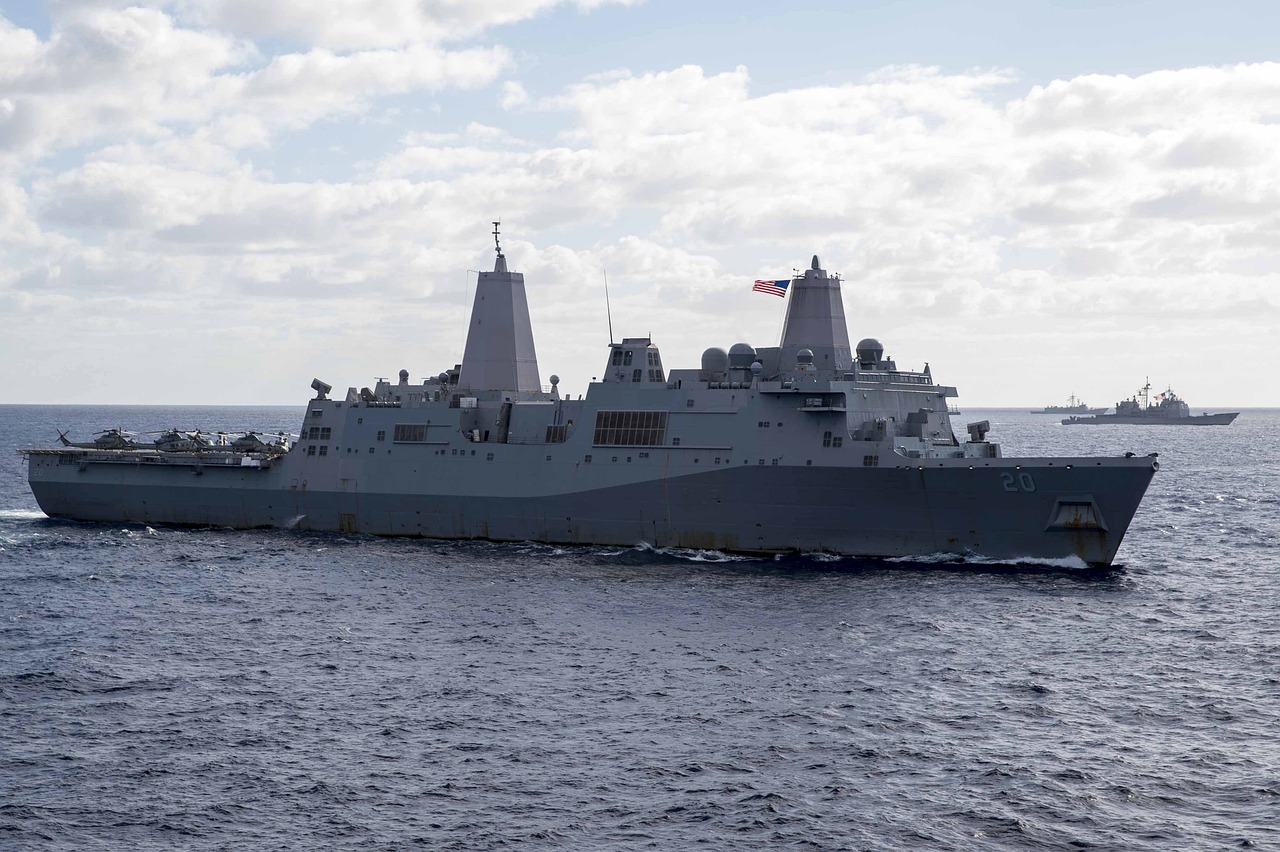
Stealth Features
The Zumwalt-class destroyer is not just another ship in the fleet; it’s a game-changer, especially when it comes to stealth capabilities. Imagine a shadow gliding through the water, almost invisible to the naked eye and radar. This advanced vessel is designed with a unique hull shape and materials that significantly reduce its radar cross-section. This means that enemy forces find it challenging to detect and target the Zumwalt, enhancing its survivability in combat scenarios. In an age where information and detection are everything, being undetectable is a massive advantage.
One of the standout features of the Zumwalt-class destroyer is its hull design. The ship's innovative, angular shape is not just for aesthetics; it plays a crucial role in its stealth capabilities. The hull is engineered to deflect radar waves away from the source, effectively rendering the ship invisible to enemy detection systems. This design minimizes not only radar signatures but also noise, making it quieter than traditional naval vessels. In the world of naval warfare, where every sound can give away a position, this is akin to moving through a crowded room without anyone noticing you.
Furthermore, the Zumwalt-class is equipped with advanced sensors that enhance its operational effectiveness while maintaining a low profile. These sophisticated systems provide real-time data and situational awareness, allowing the crew to detect threats and respond rapidly without revealing their location. The integration of these sensors means that the Zumwalt can operate effectively in hostile environments, gathering intelligence and engaging targets with precision while remaining largely undetected.
To illustrate the Zumwalt's stealth features, consider the following table that highlights key aspects of its design:
| Feature | Description |
|---|---|
| Hull Shape | Angular design that deflects radar waves, reducing detection. |
| Noise Reduction | Engineered to operate quietly, minimizing acoustic signatures. |
| Sensor Suite | Advanced systems providing real-time data for situational awareness. |
In conclusion, the of the Zumwalt-class destroyer are not just a technological marvel; they represent a fundamental shift in naval warfare. By combining innovative design with cutting-edge technology, the Zumwalt sets a new standard for how naval vessels can operate in the modern battlefield. As we look to the future, it’s clear that the ability to remain undetected will be a critical component of naval strategy, and the Zumwalt-class is leading the charge.
- What makes the Zumwalt-class destroyer unique?
The Zumwalt-class destroyer features advanced stealth capabilities, an innovative hull design, and cutting-edge weaponry that sets it apart from traditional naval vessels. - How does the stealth technology work?
The stealth technology minimizes radar and acoustic signatures, making it challenging for enemy forces to detect the ship. - What is the strategic role of the Zumwalt-class destroyer?
It serves as a multi-mission platform capable of supporting various operations, enhancing naval strategy in modern warfare.

Hull Design
The hull design of the Zumwalt-class destroyer is nothing short of revolutionary. Imagine a sleek, futuristic vessel that glides through the water with minimal resistance and maximum stealth. This unique hull shape, often referred to as a "tumblehome" design, is pivotal in reducing both noise and radar signatures. Why does this matter? In modern naval warfare, being undetected can mean the difference between victory and defeat. The Zumwalt's hull is engineered to deflect radar waves, making it significantly harder for enemy radar systems to lock onto it. This feature enhances its survivability, allowing it to operate effectively in hostile environments where traditional ships might be easily targeted.
Additionally, the hull's design contributes to improved stability and maneuverability. The low profile not only aids in stealth but also ensures that the ship can navigate through turbulent waters with grace. Picture a nimble dancer on a stage, moving effortlessly while the audience remains captivated without even realizing it's there. This is precisely how the Zumwalt-class operates in the vast ocean—a ghostly figure that can strike with precision and vanish without a trace.
Moreover, the hull is constructed using advanced composite materials that are both lightweight and durable. This innovative approach not only enhances performance but also reduces maintenance costs over time. The combination of these materials with the unique shape allows the Zumwalt to achieve higher speeds while consuming less fuel, making it an efficient powerhouse on the water.
In summary, the hull design of the Zumwalt-class destroyer is a masterclass in modern naval architecture. It embodies the principles of stealth, speed, and efficiency, setting a new standard for future naval vessels. As we look toward the future of naval warfare, the implications of such a design will undoubtedly inspire new innovations and strategies in shipbuilding.
- What makes the Zumwalt-class destroyer different from other naval ships? The Zumwalt-class features a unique hull design that enhances stealth and maneuverability, along with advanced weapon systems and sensors that set it apart.
- How does the hull design affect the Zumwalt's performance? The hull design minimizes radar detection and reduces noise, allowing for stealthier operations and better performance in various maritime conditions.
- What materials are used in the hull construction? The hull is made from advanced composite materials that provide durability while keeping the ship lightweight for improved speed and fuel efficiency.
- How does the Zumwalt-class integrate with other naval forces? Its design allows for seamless interoperability with allied forces, enhancing collaborative capabilities during joint operations.
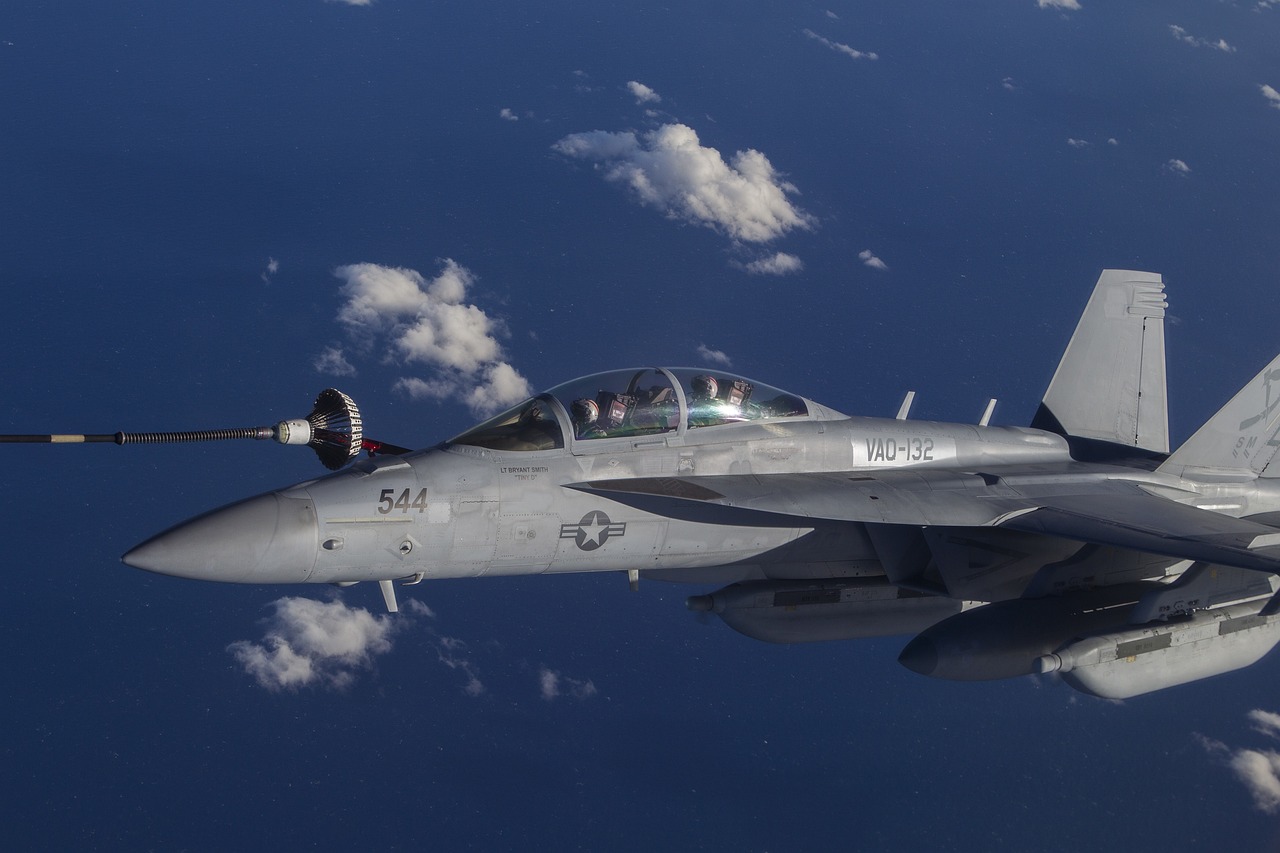
Advanced Sensors
The Zumwalt-class destroyer is not just a marvel of engineering; it’s a technological powerhouse, especially when it comes to its advanced sensor systems. These systems are designed to provide unparalleled situational awareness, allowing the Zumwalt to operate effectively in complex maritime environments. Imagine being able to see everything happening around you, even when you’re miles away from the action—that's the kind of capability these sensors offer.
One of the key features of the Zumwalt's sensor suite is its multi-function radar, which integrates several functions into one system. This radar can track multiple targets simultaneously, providing real-time data that is crucial for decision-making in combat scenarios. It’s like having a bird’s eye view of the battlefield, ensuring that the crew is always a step ahead of potential threats. The radar's advanced capabilities also allow it to operate effectively in electronic warfare environments, where traditional radar systems might struggle.
Moreover, the Zumwalt-class destroyer is equipped with electro-optical and infrared sensors that enhance its surveillance capabilities. These sensors enable the ship to detect and identify targets in a variety of conditions, including low visibility scenarios. This is particularly important for stealth operations, where maintaining a low profile is essential. By blending these advanced sensors with its stealth features, the Zumwalt can navigate hostile waters with a significant advantage.
Another remarkable aspect of the Zumwalt's sensor technology is its networked systems. These sensors are not operating in isolation; they are integrated into a larger network that connects with other naval assets and command centers. This interoperability allows for a more comprehensive understanding of the operational environment, enabling the Zumwalt to act not just as a solitary unit but as part of a cohesive force. This capability is vital for modern naval engagements, where information is power.
In summary, the advanced sensors aboard the Zumwalt-class destroyer are a game-changer in naval warfare. They provide the crew with enhanced situational awareness, allowing for effective engagement of threats while maintaining stealth. As we look to the future of naval operations, it’s clear that these sensor technologies will play a pivotal role in shaping how naval forces conduct missions and respond to emerging challenges.
- What makes the Zumwalt-class destroyer unique?
The Zumwalt-class destroyer is unique due to its stealth capabilities, advanced weaponry, and innovative hull design that enhances its operational versatility. - How do the advanced sensors improve naval operations?
The advanced sensors provide real-time data and situational awareness, allowing the Zumwalt to engage threats effectively while remaining undetected. - Can the Zumwalt-class destroyer operate with allied forces?
Yes, the Zumwalt-class destroyer is designed for interoperability, allowing it to seamlessly integrate with allied naval forces during joint operations. - What is the significance of the Zumwalt's multi-function radar?
The multi-function radar allows the Zumwalt to track multiple targets simultaneously, enhancing its combat effectiveness and situational awareness.

Weapon Systems
The Zumwalt-class destroyer is not just a marvel of modern engineering; it is a powerhouse brimming with advanced weaponry designed to dominate the seas. At the heart of its combat capabilities lies the Advanced Gun System (AGS), which boasts long-range precision strike capabilities. This system is capable of launching 155mm projectiles that can hit targets over 60 nautical miles away, making it a formidable asset in both offensive and defensive operations. Imagine being able to strike an enemy position from such a distance; it’s like having a sniper rifle for naval warfare!
But that’s not all. The Zumwalt-class is also equipped with a suite of missile systems that enhance its versatility. These include the Tomahawk cruise missiles, which can be launched from the ship's vertical launch system (VLS). This capability allows the Zumwalt to engage land targets with pinpoint accuracy, further extending its operational reach. The integration of these missiles into the destroyer's arsenal signifies a shift towards more asymmetrical warfare, where engaging the enemy at a distance can be the difference between victory and defeat.
Moreover, the Zumwalt-class destroyer is outfitted with close-in weapon systems (CIWS) to protect against aerial threats. The Phalanx CIWS is one such system that utilizes a rapid-fire gun to intercept incoming missiles and aircraft. This multi-layered defense strategy ensures that the destroyer is not only a threat to enemy forces but also a bastion of protection for allied ships and assets in the vicinity.
To give you a clearer picture of the Zumwalt-class destroyer’s weapon systems, here’s a quick overview:
| Weapon System | Type | Range | Purpose |
|---|---|---|---|
| Advanced Gun System (AGS) | Artillery | 60+ nautical miles | Long-range precision strikes |
| Tomahawk Cruise Missiles | Missile | 1,000+ nautical miles | Land attack and naval operations |
| Phalanx CIWS | Close-in weapon system | 1-2 nautical miles | Defense against aerial threats |
In addition to these systems, the Zumwalt-class destroyer is designed with interoperability in mind, allowing it to work alongside other naval assets seamlessly. It can coordinate with aircraft, submarines, and allied ships to create a cohesive strike package that can overwhelm enemy defenses. This level of integration is crucial as modern warfare becomes increasingly complex and multifaceted.
As we look ahead, the implications of the Zumwalt-class destroyer’s weapon systems extend beyond its immediate capabilities. They signal a transformative shift in naval warfare, where the emphasis is placed on precision, reach, and adaptability. With these advanced systems, the Zumwalt-class is not just a ship; it is a floating command center, capable of projecting power and influence across vast oceanic expanses.
- What is the primary role of the Zumwalt-class destroyer? The Zumwalt-class destroyer serves multiple roles, including long-range strike capabilities, anti-air and anti-surface warfare, and maritime security operations.
- How does the stealth technology of the Zumwalt-class destroyer work? Its unique hull design and advanced materials reduce radar cross-section, making it less detectable by enemy forces.
- What types of missions can the Zumwalt-class undertake? It can support a variety of missions, from conventional warfare to humanitarian assistance, thanks to its advanced systems and versatility.

Strategic Role in Modern Warfare
The Zumwalt-class destroyer is not just another ship in the U.S. Navy's fleet; it represents a paradigm shift in how naval forces operate in the modern world. With its multi-mission capabilities, the Zumwalt is designed to tackle a wide array of challenges, from traditional naval engagements to complex humanitarian missions. Imagine a Swiss Army knife of the seas—versatile, adaptable, and ready for anything. This destroyer is equipped to handle various operations, making it a vital asset in any naval strategy.
One of the most significant aspects of the Zumwalt's strategic role is its ability to integrate seamlessly with other forces. In today’s interconnected military landscape, the ability to collaborate with allied naval forces is crucial. The Zumwalt-class destroyer's advanced systems allow it to operate alongside other vessels, enhancing joint operations and fostering a unified maritime strategy. This interoperability is not merely a bonus; it’s a necessity in modern warfare where threats are increasingly global and multifaceted.
Moreover, the Zumwalt's capabilities extend beyond mere combat. It is designed to support a variety of missions, including humanitarian assistance and disaster relief efforts. For instance, in the wake of natural disasters, the destroyer can provide essential supplies, medical assistance, and logistical support, showcasing its role as a peacekeeper as well as a warrior. This dual functionality not only enhances its value but also aligns with the evolving expectations of naval forces in the 21st century.
As we look to the future, the implications of the Zumwalt-class destroyer on naval doctrine are profound. Its advanced technology and multifunctional design are likely to prompt shifts in strategy and tactics. For example, the integration of unmanned systems and artificial intelligence in naval operations could redefine how missions are planned and executed. The Zumwalt is at the forefront of this evolution, pushing the boundaries of what naval warfare can achieve.
In summary, the Zumwalt-class destroyer is more than a technological marvel; it is a strategic asset that embodies the future of naval warfare. Its ability to adapt, integrate, and respond to a variety of missions makes it a cornerstone of modern military strategy. As we continue to face new challenges on the global stage, the Zumwalt-class will undoubtedly play a pivotal role in shaping the future of naval engagements.
- What makes the Zumwalt-class destroyer unique?
The Zumwalt-class destroyer features advanced stealth capabilities, cutting-edge weapon systems, and a multi-mission design that allows it to operate effectively in various roles. - How does the Zumwalt-class enhance joint operations?
Its advanced communication and sensor systems enable seamless integration with allied forces, improving collaboration during joint missions. - Can the Zumwalt-class support humanitarian missions?
Yes, the Zumwalt is equipped to provide logistical support, medical assistance, and other resources during humanitarian crises. - What is the future of naval warfare with the Zumwalt-class?
The Zumwalt-class is expected to influence naval doctrine significantly, prompting new strategies and the development of technologies to counter emerging threats.
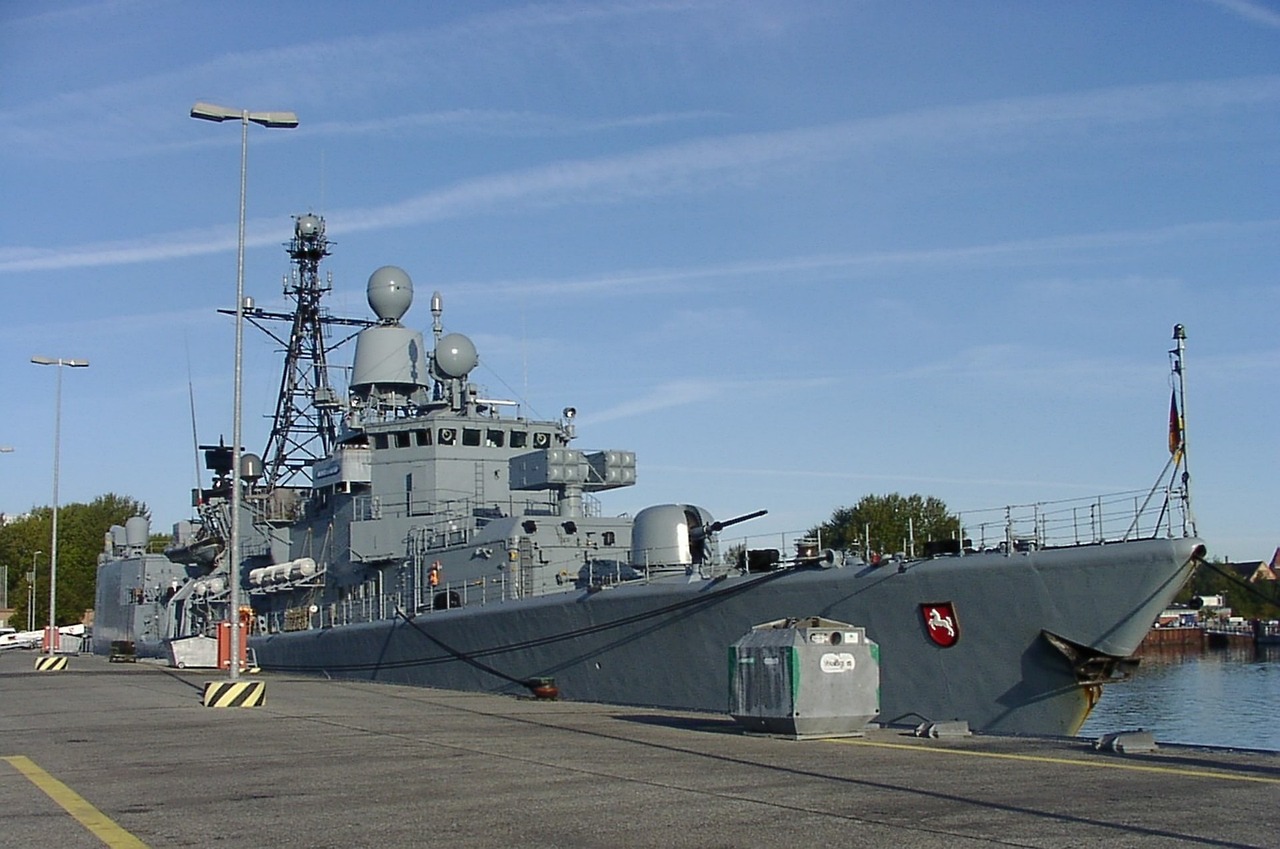
Interoperability with Other Forces
The Zumwalt-class destroyer is not just a marvel of engineering; it is also a **game-changer** in terms of how modern naval forces operate together. Imagine a fleet of ships, each equipped with the latest technology, working seamlessly as a cohesive unit. This destroyer is designed with interoperability in mind, allowing it to communicate and coordinate effectively with other naval vessels, air support, and even ground forces. The ability to share real-time data and intelligence is crucial in today’s fast-paced combat scenarios, where every second counts.
One of the standout features of the Zumwalt-class is its **advanced communication systems**. These systems ensure that information flows smoothly between units, enabling commanders to make informed decisions quickly. Think of it as a well-rehearsed orchestra, where each instrument plays its part in perfect harmony. The Zumwalt-class destroyer acts as a conductor, guiding other forces in executing complex operations efficiently.
Moreover, the destroyer’s design allows for **flexibility** in various mission profiles. Whether it’s engaging in **combat operations**, conducting **humanitarian missions**, or participating in **joint exercises** with allied forces, the Zumwalt can adapt to the situation at hand. This adaptability is essential, especially in a world where threats can emerge unexpectedly. For instance, during a simulated joint operation, the Zumwalt-class may coordinate with aircraft carriers, submarines, and land forces, creating a multi-dimensional battle strategy that leverages the strengths of each unit.
In addition, the Zumwalt-class destroyer enhances **collaborative efforts** through its integration with NATO forces and other international partners. This interoperability not only strengthens alliances but also ensures that naval strategies are aligned across different nations. By participating in joint training exercises, the Zumwalt helps to foster a sense of unity and shared purpose among allied forces, which is crucial for maintaining maritime security.
To illustrate the importance of interoperability, consider the following table that highlights key features of the Zumwalt-class that facilitate joint operations:
| Feature | Description |
|---|---|
| Advanced Communication Systems | Real-time data sharing and coordination with other forces. |
| Flexible Mission Profiles | Ability to adapt to various operational scenarios. |
| Joint Training Exercises | Enhances collaboration with NATO and allied forces. |
In conclusion, the Zumwalt-class destroyer's focus on interoperability is not just a technical specification; it represents a shift in naval warfare philosophy. As we navigate an increasingly complex global landscape, the ability to work together will be paramount. This destroyer exemplifies how modern naval forces can unite to face emerging challenges, ensuring that they remain a formidable presence on the world's oceans.
- What makes the Zumwalt-class destroyer unique? The Zumwalt-class features advanced stealth technology, an innovative hull design, and cutting-edge weaponry, setting it apart from traditional naval vessels.
- How does the Zumwalt-class enhance naval operations? Its interoperability with other forces allows for seamless coordination, improving the effectiveness of joint missions.
- What role does the Zumwalt-class play in modern warfare? The destroyer serves as a multi-mission platform, capable of supporting various operations from combat to humanitarian assistance.
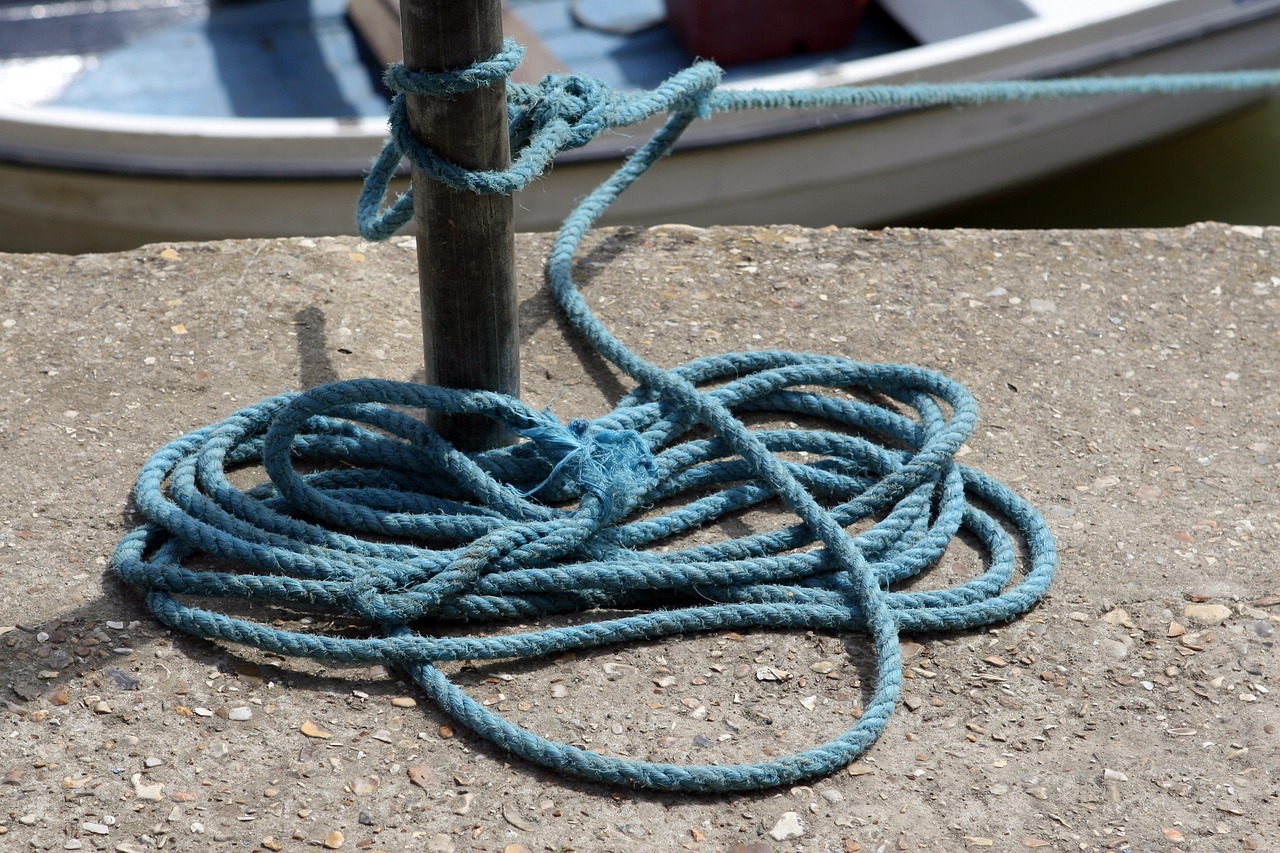
Future Implications for Naval Doctrine
This article explores the Zumwalt-class destroyer, examining its advanced technology, strategic significance, and the implications for modern naval warfare in an evolving global landscape.
The Zumwalt-class destroyer represents a significant leap in naval technology, featuring stealth capabilities, advanced weaponry, and a unique design that enhances operational versatility and effectiveness in various maritime environments.
Equipped with cutting-edge systems, the Zumwalt-class destroyer integrates advanced radar, automated systems, and an electric propulsion system, revolutionizing naval operations and setting new standards for future warships.
The design of the Zumwalt-class includes stealth technology that minimizes radar cross-section, making it harder for enemy forces to detect and target, thus enhancing survivability in combat scenarios.
The unique hull shape of the Zumwalt-class destroyer contributes to its stealth capabilities, allowing for reduced noise and radar signatures, which are crucial in modern naval engagements.
Its sophisticated sensor suite provides real-time data and situational awareness, allowing the Zumwalt to engage threats more effectively while maintaining a low profile in hostile environments.
The Zumwalt-class is armed with an array of advanced weaponry, including long-range precision strike capabilities, making it a formidable presence in naval warfare and enhancing its operational reach.
The Zumwalt-class destroyer plays a critical role in modern naval strategy, serving as a multi-mission platform capable of supporting a variety of operations, from conventional warfare to humanitarian assistance.
The destroyer's design allows for seamless integration with allied naval forces, enhancing collaborative efforts during joint operations and contributing to a unified maritime strategy.
As we look ahead, the Zumwalt-class destroyer is poised to reshape naval doctrine significantly. Its advanced capabilities will not only redefine how navies operate but also influence strategic thinking at the highest levels. Imagine a chess game where each piece moves in ways previously thought impossible; that's the kind of transformation the Zumwalt brings to the table.
For instance, the emphasis on stealth and automation will likely lead to a shift in tactics. Traditional naval engagements may evolve into more complex scenarios where stealthy ships like the Zumwalt can operate in contested environments without being easily detected. This shift will necessitate changes in training, operational planning, and even the types of missions undertaken by naval forces.
Moreover, the Zumwalt's interoperability with other forces means that joint operations will become more common. This integration can enhance coalition efforts, allowing for synchronized strikes and improved situational awareness. The implications are profound: navies around the world may need to rethink how they collaborate, share intelligence, and conduct missions together.
In terms of future technological development, the Zumwalt-class could serve as a blueprint for next-generation warships. As it sets new standards, we may see an influx of innovations aimed at enhancing stealth, automation, and weapon systems. This will undoubtedly influence defense budgets, research priorities, and the overall direction of naval technology.
To sum it up, the Zumwalt-class destroyer isn't just a new ship; it's a harbinger of change in naval warfare. Its impact will ripple through strategy, tactics, and technology, ensuring that the future of naval doctrine is as dynamic and unpredictable as the seas it will navigate.
- What is the Zumwalt-class destroyer?
The Zumwalt-class destroyer is a class of stealthy, multi-mission warships designed to operate in modern naval warfare, equipped with advanced technology and weaponry.
- How does the Zumwalt-class enhance naval operations?
It enhances naval operations through its stealth capabilities, advanced sensors, and automated systems, allowing for greater effectiveness and survivability in combat.
- What are the strategic implications of the Zumwalt-class?
The Zumwalt-class will influence future naval doctrine, prompting changes in tactics, operational planning, and technological development within global navies.
- Can the Zumwalt-class operate with allied forces?
Yes, its design allows for seamless integration with allied naval forces, enhancing collaborative efforts during joint operations.
Frequently Asked Questions
- What is the Zumwalt-class destroyer?
The Zumwalt-class destroyer is a revolutionary naval vessel that showcases advanced technology, including stealth capabilities and automated systems. Designed to enhance operational versatility, it represents a significant leap in modern naval warfare.
- How does the stealth technology of the Zumwalt-class work?
The Zumwalt-class destroyer employs a unique hull design that minimizes its radar cross-section. This innovative shape reduces both noise and radar signatures, making it harder for enemy forces to detect and target the ship, thus enhancing its survivability in combat scenarios.
- What kind of weapon systems does the Zumwalt-class destroyer utilize?
This destroyer is equipped with an array of advanced weaponry, including long-range precision strike capabilities. These systems make it a formidable presence in naval warfare, allowing it to engage threats effectively from a distance.
- What role does the Zumwalt-class play in modern naval strategy?
The Zumwalt-class destroyer serves as a multi-mission platform, capable of supporting various operations, from conventional warfare to humanitarian assistance. Its design allows for seamless integration with allied naval forces, enhancing collaborative efforts during joint operations.
- How will the Zumwalt-class influence future naval warfare?
As naval warfare continues to evolve, the Zumwalt-class destroyer is expected to influence future naval doctrine significantly. It will prompt shifts in strategy, tactics, and the development of new technologies to meet emerging threats in the maritime domain.
- What are the key technological innovations of the Zumwalt-class?
The Zumwalt-class destroyer features cutting-edge systems such as advanced radar, automated operations, and an electric propulsion system. These innovations revolutionize naval operations and set new standards for future warships.



















